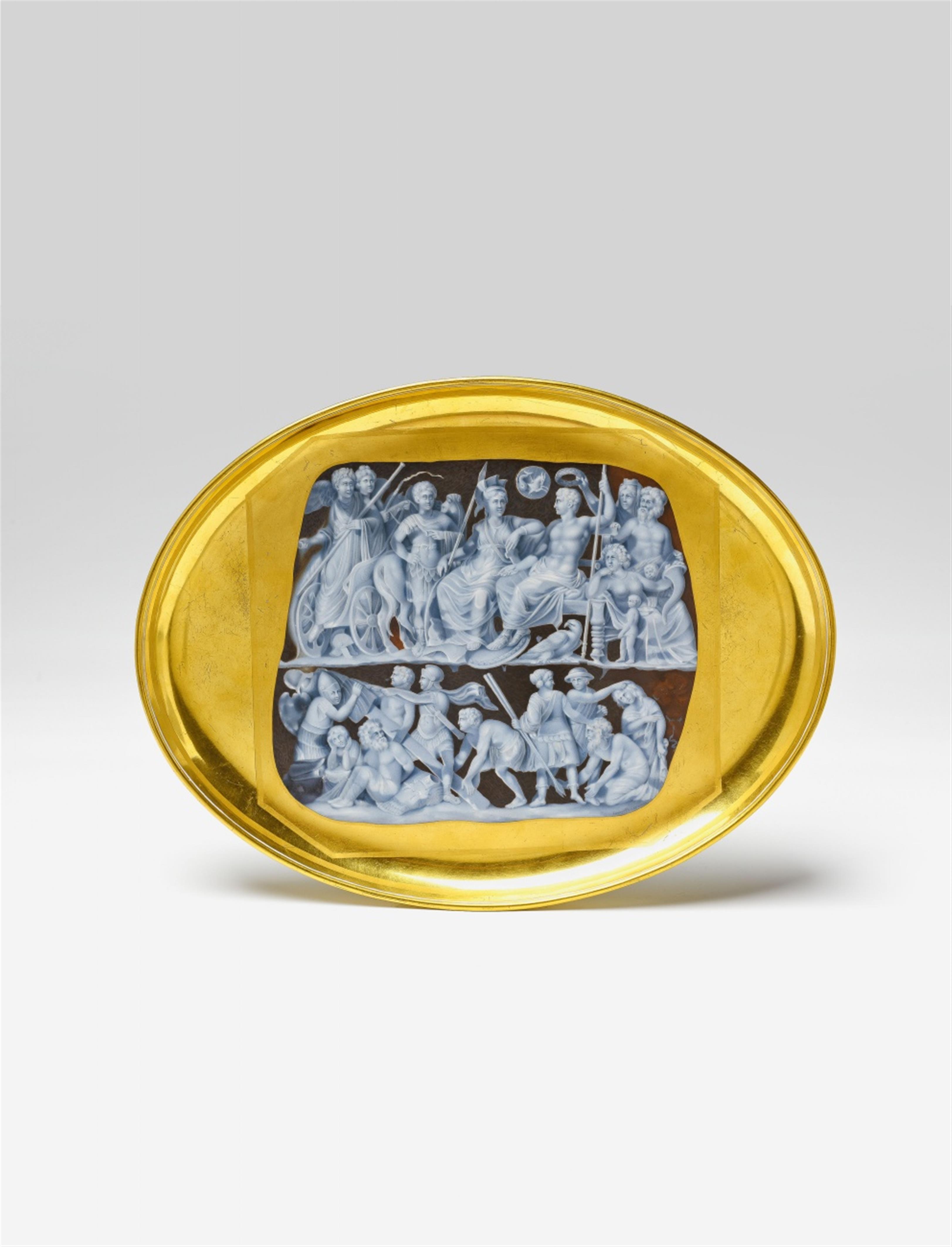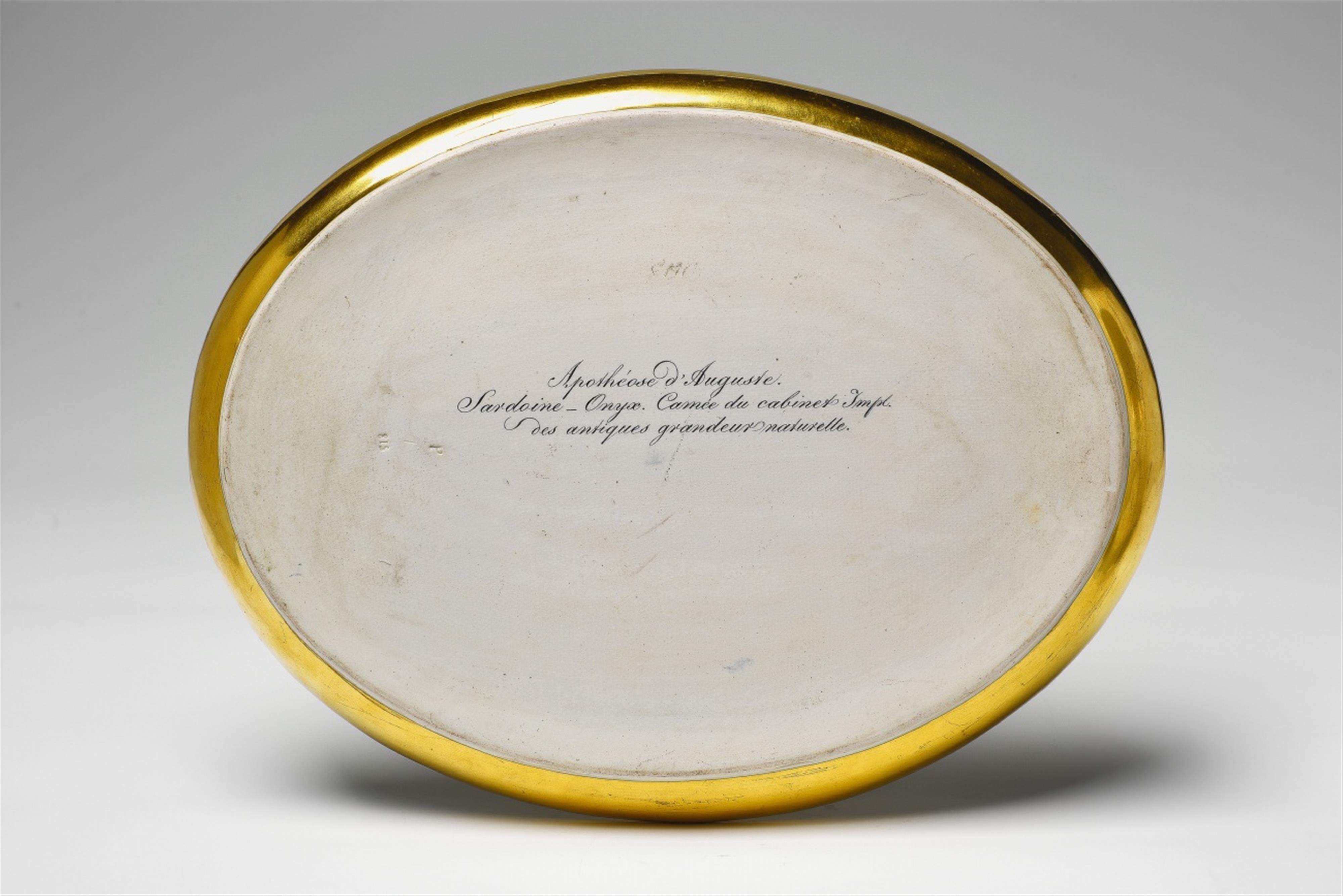A Niedermayer porcelain tray with Vienna cameo painting
Of oval form with slightly raised border. Painted with a large depiction of a cameo from the Imperial art collection labelled to verso "Apothéose d´Auguste.Sardoine-Onyx. Camée du cabinet Impl. des antiques grandeur naturelle." Unglazed base with blue bindenschild mark, year stamp 813, potter's mark P. H 2.7, W 36.2, D 28 cm.
Vienna, Niedermayer manufactory, fired in 1813 and decorated contemporaneously, painting attributed to Lorenz Herr.
This plate shows the famous "Gemma Augustea" from the intaglio and cameo collection of the Kunsthistorisches Museum in Vienna. The Roman intaglio is dated to the early Imperial era, around 9 - 12 A.D, and is considered the quintessential example of the glyptic arts. According to legend, the cameo cracked in half at the moment of Christ's death on the cross when the rocks split and the temple veil was torn asunder. By the mid 15th century, the important gem had already had an adventurous journey leading from Ethiopia to the town hall of Toulouse to the banker and art collector Castellani in Florence, who arranged for the first casts to be made. Even then, the piece was considered the most sought-after of ancient cameos. Pope Paul II apparently offered 10,000 thalers and the construction of a bridge over the Garonne for the piece in 1470. In 1540, it found its way into the inventory of Fontainebleau, where it disappeared during the chaos of the Huguenot wars. It is recorded in the treasury of Vienna in 1619, and was presumably purchased by Rudolph II some time between 1591 and his death in 1612.
The gem was first published by Joseph Calasanz Ritter von Arneth after a drawing by Fendi in 1849 in "Die antiken Cameen des k. k. Münz- u. Antiken-Cabinettes". This exceptional porcelain tray was created over 30 years before his publication and illustrates the high standards achieved in cameo painting at the Vienna manufactory under Conrad von Sorgenthal as one of its finest productions.
Provenance
Dorotheum Vienna, auction 18th October 2007, lot 1441.
Literature
For more on the history cf. Lörz, Die mittelalterliche Geschichte der Gemma Augustea, in: Concilium medii aevi, 9/2006, p. 159-173.




